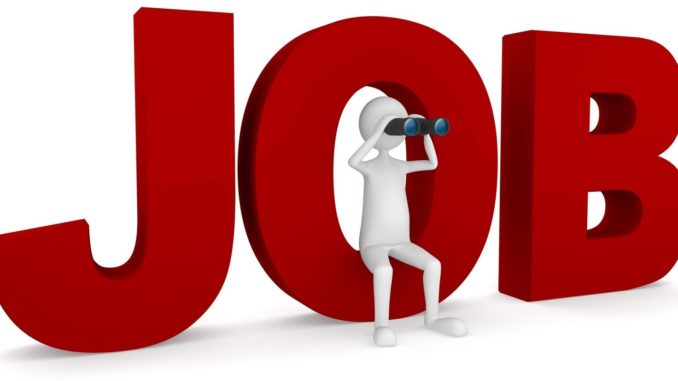
43 per cent of the labour force is without a full-time job or any job at all. That is a labour crisis. And to think just about four years ago (Q4-2014), that is, relative to the most recent data of Q3-2018 that I quoted, the unemployment rate was 6 per cent; albeit the underemployment rate was still quite high at about 18 per cent.
I was the keynote speaker at an economic dialogue on Nigeria organised by Konrad Adenauer Stiftung (KAS) and the Delegation of German Industry and Commerce in Nigeria (AHK) in the week just past (May 23). Titled “Road to Economic Development: Challenges and Opportunities”, the dialogue was aimed at shaping the priorities of the incoming second administration of President Muhammadu Buhari.
On the panel afterwards, moderated by Marc Lucassen of AHK and Vladimir Krech of KAS, were Obadiah Mailafia, former deputy governor of the Central Bank of Nigeria (CBN); Onyeche Tifase, chief executive of the Nigerian subsidiary of Siemens, the German industrial conglomerate; Olaf Schmuser, senior representative of the Commerzbank franchise in Nigeria, and I.
I started my speech with the one issue that is undoubtedly uppermost on the minds of Nigerians at this time: Jobs!
We have a jobs crisis in Nigeria. As I recall, during the 2019 election campaigns, when it became quite clear that the prosperity messaging of “jobs” by the main opposition Peoples Democratic Party (PDP) was resonating with the populace, the ruling All Progressives Congress (APC) changed its broad emphasis on what it likely saw as an array of achievements in fighting corruption and building infrastructure, for instance, to one of how many jobs it had created in the past four years.
How is it possible that we have a jobs crisis with only about a quarter of the labour force not employed, you probably wonder? At 23 per cent, the unemployment rate would probably be considered relatively mild, if our challenging circumstances are considered.
There is nothing wrong with the statistics. Because when the under-employment rate of 20 per cent is added to the unemployment rate of 23 per cent, totalling 43 per cent, the statistics reveal what comes close to what you and I probably see and feel on the proverbial “streets”.
43 per cent of the labour force is without a full-time job or any job at all. That is a labour crisis. And to think just about four years ago (Q4-2014), that is, relative to the most recent data of Q3-2018 that I quoted, the unemployment rate was 6 per cent; albeit the underemployment rate was still quite high at about 18 per cent.
At 28 per cent of GDP, the country’s gross public debt is not alarming. But if the debt of the federal government at 25 per cent of GDP takes more than half of its revenue to service, that should be alarming indeed.
The poor economic growth of recent years is attributed for this sorry state of affairs. In light of the abundant evidence that the Nigerian economy enjoys a boom when oil prices are ascendant, it could also be said that relatively lower crude oil prices are to blame when the economy underperforms.
When the Nigerian economy grew by 6.2 per cent in 2014, brent crude oil prices averaged $99 per barrel, for instance. In the three preceeding years of 2011, 2012 and 2013, when growth was 5.3 per cent, 4.2 per cent, and 5.5 per cent respectively, oil prices averaged above $100 a barrel.
In 2016, when the economy recorded a negative growth of 1.6 per cent, oil prices averaged $45 a barrel. And when oil prices recovered to above $50 a barrel in 2017, the economy started growing again, albeit below 1 per cent. Incidentally, medium-term growth expectations of above 2 per cent from 2019, are also based on expectations of high oil prices; above $60 a barrel, at least.
Still, considering how the oil GDP is less than 10 per cent of the country’s output, it is highly unlikely that the sector itself is responsible for the growth push when oil prices are high. What is it then?
My theory is: Oil prices affect the economy because government spending is a major catalyst of economic activity in Nigeria. And when oil prices are high, the government has more revenue and thus spends more.
If that is the case, the authorities have to find a way to tax more of the citizenry with little or no upheaval. A recent testing of the waters on increasing value-added tax (VAT) was met with resistance. I suggest perhaps another way in later sections. Why not take a direct charge on bank deposits, for instance? The banks do it, why can’t the government?
This is even more pertinent considering how the government now uses 60 per cent of its revenue on debt servicing. At 28 per cent of GDP, the country’s gross public debt is not alarming. But if the debt of the federal government at 25 per cent of GDP takes more than half of its revenue to service, that should be alarming indeed.
Rafiq Raji, a writer and researcher, is based in Lagos, Nigeria. Twitter: @DrRafiqRaji
END

Be the first to comment